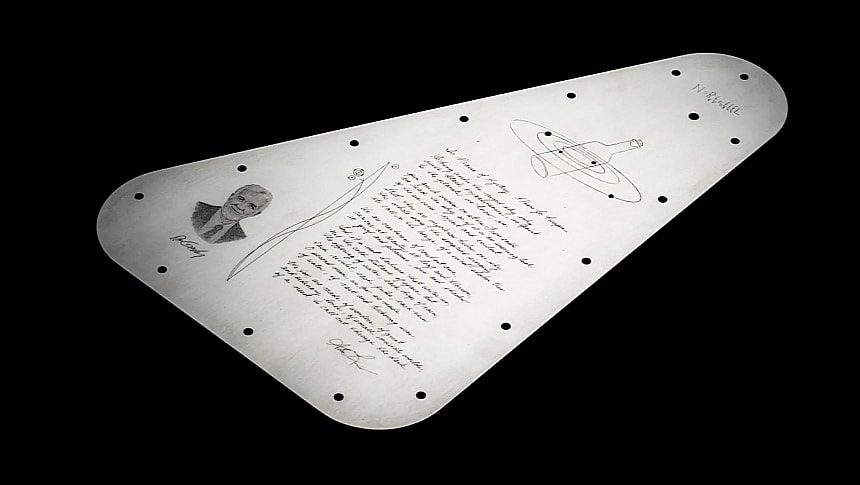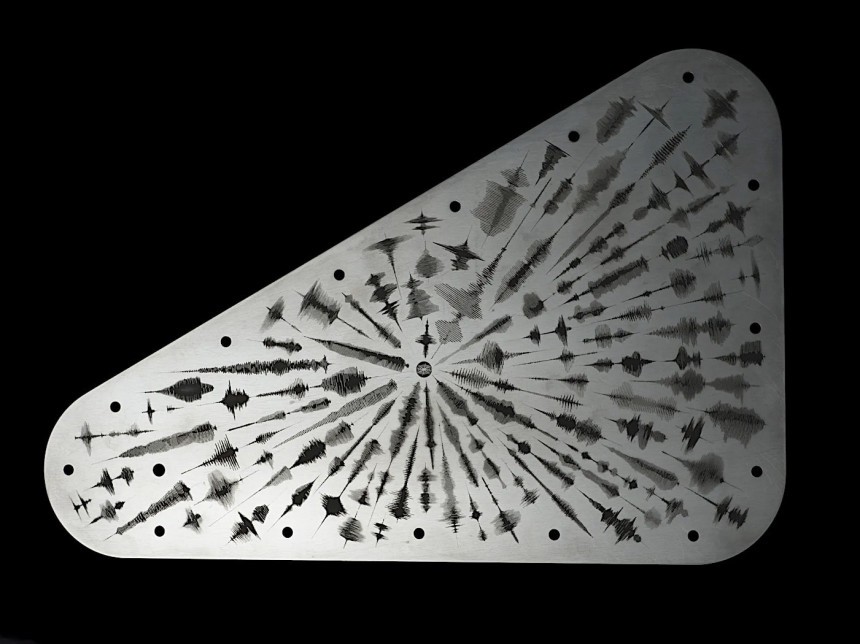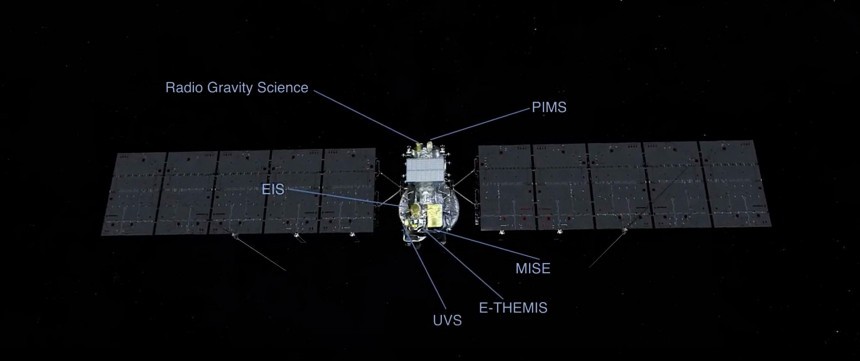Come October 2024, a SpaceX Falcon Heavy rocket will lift off from the Kennedy Space Center in Florida carrying with it a very special piece of hardware: the Europa Clipper spacecraft. Its mission: study Jupiter's moon Europa. Its cargo: a very special triangular metal plate that carries with it tons messages and the names of more than 2.6 million human beings.
As most of you already know, Europa is one special place in this solar system of ours. As one of Jupiter's 95 known moons, it is one of the largest in this incredible collection of natural satellites, but it also has another special thing about it: it is covered by a layer of ice underneath which scientists speculate a huge ocean of saltwater is hidden.
How huge? Well, chances are it is large enough to hold twice as much water as all of Earth's oceans combined. And with such a huge amount of water comes the near certainty of the presence of life in some form – and that is exactly what the Europa Clipper goes out to investigate.
The spacecraft is an orbiter that will not descend to the surface but will sample gas and dust from above. For the task it will use a series of instruments, including radars, magnetometers, and sensors - but those are not the only pieces of hardware the machine will carry with it into outer space.
Although there have been spacecraft that transited the Jovian system in the past, Europa Clipper is the first purpose-built machine to be sent out to study this particular moon. As such, it's a very important piece of hardware that needs all the attention.
As it's done several times before, starting with the Voyager missions and ending with the Perseverance Mars rover, NASA allowed humans here on Earth to submit their names for a chance of getting them out there into the far reaches of our solar system.
The campaign, titled Message in a Bottle, kicked off in the summer of last year, and as you're reading this no less than 2.6 million of our peers have submitted their names to be included on the mission.
Last week, NASA decided to give us all a glimpse of how the names will make the journey to Europa, as well as a look into the hidden messages and meanings the ship will carry with it.
All of that will sit on a triangular metal plate that, according to NASA, will honor Europa's water connection with our own planet in several ways. The metal plate is rather small in size, measuring only seven by 11 inches (18 by 28 cm), and it is made of tantalum. It will feature graphic elements on both sides.
All the 2.6 million names submitted by the public will be stenciled at sizes that are impossible to read with the naked eye on a silicon microchip. The chip has been placed on one side of the plate, right alongside a handwritten engraving of the poem In Praise of Mystery: A Poem for Europa by U.S. Poet Laureate Ada Limón (you can listen to it in the second video beneath this text).
The chip with the names forms the centerpiece of an illustration of a bottle amid the Jovian system, a reference to the campaign name for the mission.
On the other side of the metal plate NASA included recordings of the word water being spoken in no less than 103 languages, a throwback to the Voyager mission that carried with it the sounds and images of Earth. These recordings have been transformed into waveforms, which are visual representations of sound waves, and etched directly onto the plate. At the center of these waveforms sits the American sign language for water.
Most importantly, and as proof of how confident NASA is it could find life on Europa, the Drake Equation is etched onto the plate as well. That's a mathematical formulation that aims to calculate the possibility of us finding civilizations on other planets in the Universe.
Other mathematical and science references that we humans easily get but aliens would probably have a hard time doing that are included on the plate as well. There is artwork pointing to radio frequencies considered the most likely to allow interstellar communication, as well as a portrait of Ron Greeley, an astronomer considered one of the founders of planetary science.
Remember how I briefly mentioned the instruments Europa Clipper will use to study the Jovian moon? Well, the electronics for those are shielded from Jupiter's radiation by a metal vault. The metal plate with the names and the hidden messages will be attached to this vault.
The Europa Clipper spacecraft is currently in the final stages of assembly. After launch in October 2024, it will travel a distance of 1.6 billion miles (2.6 billion km), reaching Europa in 2030. The spacecraft is initially supposed to perform 49 close flybys of the moon in its quest to do science.
How huge? Well, chances are it is large enough to hold twice as much water as all of Earth's oceans combined. And with such a huge amount of water comes the near certainty of the presence of life in some form – and that is exactly what the Europa Clipper goes out to investigate.
The spacecraft is an orbiter that will not descend to the surface but will sample gas and dust from above. For the task it will use a series of instruments, including radars, magnetometers, and sensors - but those are not the only pieces of hardware the machine will carry with it into outer space.
Although there have been spacecraft that transited the Jovian system in the past, Europa Clipper is the first purpose-built machine to be sent out to study this particular moon. As such, it's a very important piece of hardware that needs all the attention.
As it's done several times before, starting with the Voyager missions and ending with the Perseverance Mars rover, NASA allowed humans here on Earth to submit their names for a chance of getting them out there into the far reaches of our solar system.
Last week, NASA decided to give us all a glimpse of how the names will make the journey to Europa, as well as a look into the hidden messages and meanings the ship will carry with it.
All of that will sit on a triangular metal plate that, according to NASA, will honor Europa's water connection with our own planet in several ways. The metal plate is rather small in size, measuring only seven by 11 inches (18 by 28 cm), and it is made of tantalum. It will feature graphic elements on both sides.
All the 2.6 million names submitted by the public will be stenciled at sizes that are impossible to read with the naked eye on a silicon microchip. The chip has been placed on one side of the plate, right alongside a handwritten engraving of the poem In Praise of Mystery: A Poem for Europa by U.S. Poet Laureate Ada Limón (you can listen to it in the second video beneath this text).
The chip with the names forms the centerpiece of an illustration of a bottle amid the Jovian system, a reference to the campaign name for the mission.
Most importantly, and as proof of how confident NASA is it could find life on Europa, the Drake Equation is etched onto the plate as well. That's a mathematical formulation that aims to calculate the possibility of us finding civilizations on other planets in the Universe.
Other mathematical and science references that we humans easily get but aliens would probably have a hard time doing that are included on the plate as well. There is artwork pointing to radio frequencies considered the most likely to allow interstellar communication, as well as a portrait of Ron Greeley, an astronomer considered one of the founders of planetary science.
Remember how I briefly mentioned the instruments Europa Clipper will use to study the Jovian moon? Well, the electronics for those are shielded from Jupiter's radiation by a metal vault. The metal plate with the names and the hidden messages will be attached to this vault.
The Europa Clipper spacecraft is currently in the final stages of assembly. After launch in October 2024, it will travel a distance of 1.6 billion miles (2.6 billion km), reaching Europa in 2030. The spacecraft is initially supposed to perform 49 close flybys of the moon in its quest to do science.












